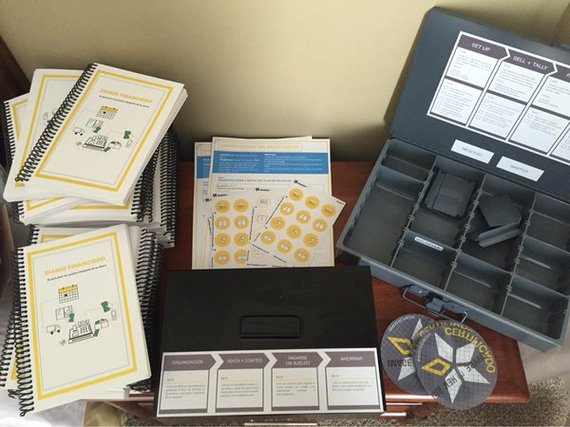By Irani Arráiz and Yuri Soares

Irani Arráiz leads the impact evaluations of many Multilateral Investment Fund projects, including projects that are designed to increase the competitiveness of businesses in Latin America. She has a PhD in economics from the University of Maryland and an MBA from IESA in Caracas, Venezuela.
Have you noticed that when you are driving with a passenger in your car, you stop talking whenever you have to perform a complicated maneuver (such as passing a truck on a narrow road or merging into traffic from an on-ramp)? It's because that task requires extra attention, and we have a limited budget for attention (cognitive bandwidth). Because the two activities requiring attention (the maneuver and talking) interfere with one another, it is a challenge to successfully complete the two simultaneously.
I learned this very early. When my brother and I were kids, we bickered a lot, as siblings usually do. During one of our arguments, my mom scratched the side of her car; she was climbing a narrow spiral ramp in a manual car with a couple of squabbling kids in the back seat. That afternoon was not pleasant for my brother and me. From then on, we were mindful of driving conditions, and reserved the squabbles to empty roads, so as not to tax my mom's bandwidth.
When we train entrepreneurs using traditional training methods, we tax their bandwidth. The activities that we have taught them and that we ask them to put in practice--such as calculating cash flow or keeping accurate records--also demand bandwidth. If you run a small business and must make constant decisions--how much inventory to purchase, where to get better terms for a loan--plus worry about issues such as power outages, while also dealing with the everyday issues of family life, your bandwidth is likely to be overtaxed. As a result, you are bound to suffer from decision fatigue and tunneling. Your attention selectively focuses on only the most pressing needs, often ignoring important tasks and decisions. The chances are that you won't spend much time thinking about the steps required to implement a proper accounting system for your small business, or any of the concepts typically mentioned during a traditional business training session.
The failure of traditional business training to understand and adapt to constraints faced by microentrepreneurs may be one of the reasons that training programs are usually found to be ineffective. In a 2013 review by David McKenzie and Chris Woodruff, the authors find that only in a very few cases does training of small businesses have demonstrated impacts on profits or sales.
That is why modern development practice is adopting a new approach to business training, which limits the effortful attention required from the entrepreneur by using rules of thumb. We are testing this new approach and training about 1,600 micro and small entrepreneurs in Ecuador. For instance, instead of teaching the entrepreneurs how to calculate their cash flow (Have you calculated a cash flow? It's complicated!), we teach them simple behaviors. For example, we tell them to start each day with the same amount of cash in their cash box, and that if they count the cash at the end of the day (which they need to record so they can keep track of their weekly and monthly cash flows), they will have a pretty good idea about their cash movement. We also tell them that they need to keep their business's and household's money separate, and that it is much easier to keep track of sales and payments if they use different spaces in the cash box. Furthermore, we give them cash boxes and financial diaries that are already labeled to easily keep their business's records. We try to keep it very simple. The end result is the same--the entrepreneur understands his or her cash movement and can plan accordingly.
There is evidence that this method is working. Alejandro Drexler, Greg Fischer and Antoinette Schoar show that applying a rules-of-thumb approach to training microentrepreneurs in the Dominican Republic improved the business owners' financial practices and boosted their revenues. For example: during weeks when business was slow, sales for the 404 business owners that received this training were, on average, 18.5% greater than sales for a group of 387 microentrepreneurs who received no training.
- reduced costs of participating in training (we provide free transportation to the training sites, which are located near their businesses, and offer training at convenient times)
- incentives to adopt the practices (raffles for those completing the "challenge")
- reminders to reduce the action-intention gap
Yuri Soares
Yuri Soares is chief of development effectiveness at the Multilateral Investment Fund. He has a PhD in economics from Michigan State University and a master's degree in agricultural economics from the University of Florida. He has worked in the United States and Brazil.
From the Multilateral Investment Fund Trends blog
